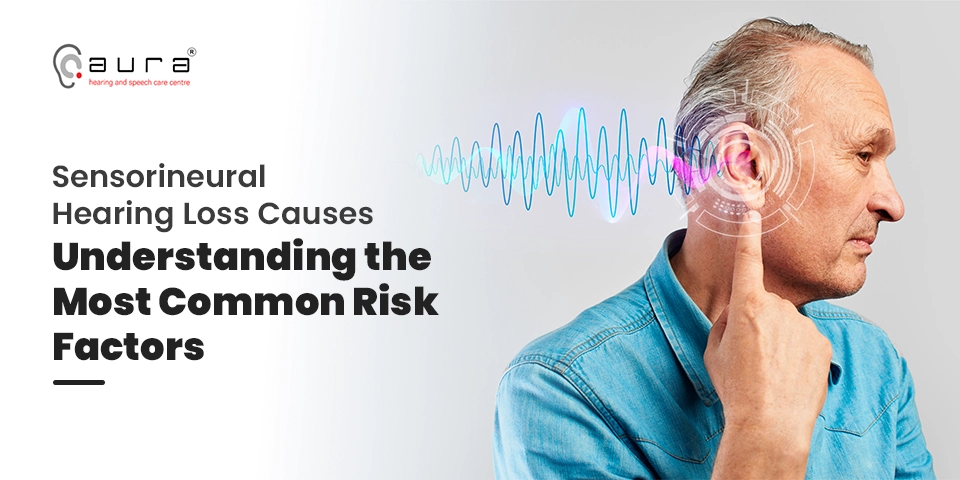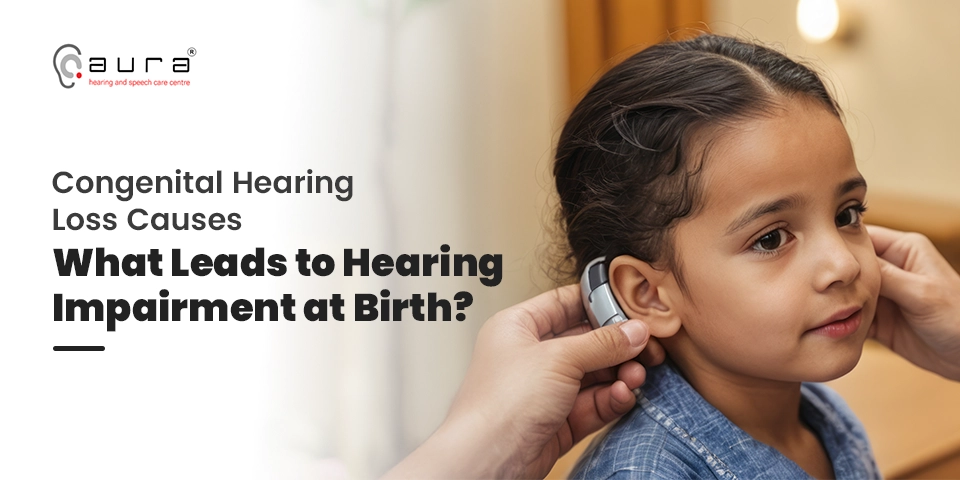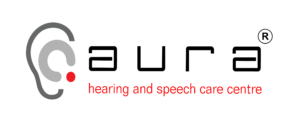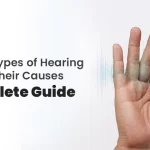
Congenital hearing loss is one of the most common birth defect abnormalities, and it is mostly associated with the genetic disorder. It is caused by a defect in genes that affect the development of the hearing organs. However, other factors like birth complications, infections, and the consumption of drugs and alcohol during pregnancy are also majorly responsible for the congenital hearing loss.
Though hearing loss is a permanent problem, there are treatments available to manage the condition. Treatment may vary based on the condition and causes. In this blog, we will discuss congenital hearing loss, its causes, symptoms, diagnosis, and treatments.
Different Types of Congenital Hearing Loss:
Worldwide, there are three types of congenital hearing loss recognized, and they are categorized on the basis of how sound transmission is affected.
- Conductive hearing loss: This type of hearing loss is caused by problems in the outer or middle ear. Malformations of the outer ear can cause chronic infections, which lead to muffled sounds.
- Sensorineural hearing loss: In this condition, the cochlea or cochlear (acoustic) nerve of the inner ear is damaged, which transmits the signal to the brain.
- Difference Between Conductive and Sensorineural Hearing Loss
To better understand the differences between conductive hearing loss and sensorineural hearing loss, here’s a comparison table to help clarify the two types of hearing loss:
| Aspect | Conductive Hearing Loss | Sensorineural Hearing Loss |
|---|---|---|
| Cause | Caused by issues in the outer or middle ear (e.g., ear infections, fluid in the ear, perforated eardrum) | Caused by damage to the inner ear (e.g., hair cells, auditory nerve) |
| Sound Transmission | Difficulty in transmitting sound from the outer ear to the inner ear | Difficulty in processing sound signals to the brain |
| Common Causes | Ear infections, fluid in the ear, impacted earwax, otosclerosis | Aging, loud noise exposure, genetics, head injuries, diseases |
| Treatment Options | Surgery, medication, earwax removal, hearing aids | Hearing aids, cochlear implants, assistive listening devices, medications |
| Reversibility | Often treatable or reversible with medical intervention | Typically permanent, but manageable with devices and treatments |
| Hearing Improvement | Sound can often be improved once the underlying issue is addressed | Amplification through hearing aids or surgical intervention for severe cases |
By comparing the two types of hearing loss, it’s clear that conductive hearing loss is usually caused by physical blockages or damage in the ear’s conductive pathways, whereas sensorineural hearing loss involves damage to the inner ear or the auditory nerve itself.
- Mixed hearing loss: This condition involves the combination of conductive and sensorineural hearing loss. This condition varies from mild to severe and can be treated by both hearing aids and surgeries.
Causes of Congenital Hearing Loss:
While there are various causes of congenital hearing loss, genetics is one of the most common causes of hearing loss. Genetic hearing loss is present at birth or develops in later life. The genes that cause the condition come from one of the parents. Parents can carry the defective genes without any symptoms, or one of them may have a hearing loss problem that they may pass on to their baby.
However, hearing loss can be a part of the syndromes like:
- Down syndrome
- Usher syndrome
- Treacher Collins syndrome
- Crouzon syndrome
- Alport syndrome
- Waardenburg syndrome
Some of the other factors responsible for the congenital hearing loss are:
- premature birth
- Infections like herpes simplex virus or rubella
- low birth weight
- birth complications
- Consumption of drugs and alcohol during pregnancy
- jaundice and Rh factor problems
- maternal diabetes
- high blood pressure during pregnancy
Symptoms of congenital hearing loss:
Infants/Babies:
- No startle to loud noises
- Doesn’t notice you until seen
- Ignores sounds others hear
- No response to held voice
- Malformed ear
Older Children:
- Delayed language
- Needs face-to-face to understand speech
- Often ignore speech
- Difficulty locating sounds
- Inappropriate volume in speech
Diagnosis of congenital hearing loss:
Early Screening: There are many hospitals that provide hearing checks within the first few weeks of life to diagnose any hearing impairment.
Two Main Tests:
- Otoacoustic Emission: In this test, sound is sent into the baby’s inner ear. Healthy ears will produce a response sound. If the response is weak, it could mean hearing loss.
- Automated Auditory Brainstem Response: This test uses stickers (electrodes) on the baby’s head to determine how their brain responds to sounds.
Further Testing: If any of the above tests suggest hearing loss, further tests are needed. These may include:
- Watching how the child reacts to sounds (behavioral tests).
- Genetic analysis to check for genetic syndrome.
- Magnetic resonance imaging (MRI) to get pictures of the inner ear and brain.
Treatment of Hearing Loss:
Depending on the severity of the condition, there are a few treatment options out there to improve the symptoms and quality of lives.
- Hearing aids—These devices increase sound, making communication easier. Aura Hearing Care offers a range of advanced hearing aids, including:
o Receiver In Canal (RIC): The device is compact and hidden, good for people new to hearing aids.
o Completely in the Canal (CIC): It is designed to fit completely inside your ear canal.
o Invisible in Canal (IIC): This is a minimal device, almost totally hidden, with just a tiny part to help take it out.
o In the Canal (ITC): Fits partly in the ear canal, with a small portion showing.
o In the Ear (ITE): This is a personalized hearing aid, designed to fit the outer ear for comfort.
o Behind the Ear (BTE): This device is the most used type and is available in different sizes.
- Cochlear implants—This device is surgically implanted and is used to treat severe hearing loss.
- Sign language—This is a visual way of communication for those with profound hearing loss.
Assistive devices—These devices are used to improve the daily activities of a person. Tools like amplified phones and alerting systems are most commonly used.
Conclusion:
While congenital hearing loss is a genetic hearing problem and there is no cure for this condition, with the right solution, this condition can be managed. Technologies like hearing aids and assistive devices can make a big difference. Moreover, early diagnosis and treatments can also play a significant role in helping children with hearing loss problems.
If you are looking to improve your hearing and life. Explore effective solutions with Aura Hearing Care and find the right solution for your needs.
1. What is congenital hearing loss?
Congenital hearing loss is a medical condition that is present since birth and is caused by defects in genes or complications during pregnancy.
2. Can congenital hearing loss be cured?
There is no cure for this condition; however, various treatments like hearing aids, cochlear implants, and assistive devices can help improve hearing and communication.
3. How is congenital hearing loss diagnosed?
It is generally detected through newborn hearing screening tests during the first few weeks of life, followed by further evaluations by an audiologist if needed.
4. What are the treatment options available for congenital hearing loss?
Treatments like hearing aids, cochlear implants, speech therapy, sign language, and assistive listening devices are available in the market to enhance communication.
5. How can I book a consultation with Aura Hearing Care?
You can book an appointment with Aura’s hearing specialists through the website (Hearing Aids—Aura Hearing Care) or visit a nearby branch for an in-person hearing assessment.











